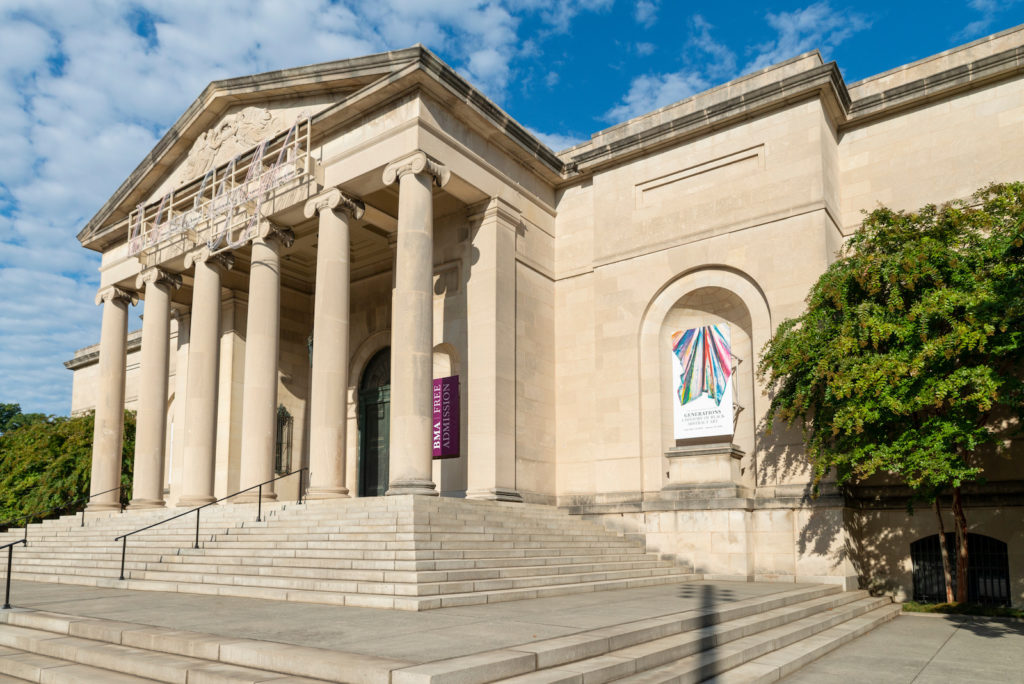Employer LaborWashing/Worker Reality

Great piece on workers at the Baltimore Museum of Art organizing. The museum is getting all kinds of good press because they have a exhibit based on the art of their own security guards. So that makes museum administration look all pro-worker. But of course it is not. It is anti-worker. This is just about pretending to care about workers in order to highlight local Black art by its own security guards. Think about all the bases that touches. It’s local. It’s a Black working class workforce. It’s Baltimore. It’s community-driven. But you know what is local, community driven, in Baltimore, and part of the Black working class? A union. And that’s what those security guards are fighting for.
While Baltimore artists, influencers, and reporters shuffled into the Baltimore Museum of Art for a preview of Guarding The Art, an upcoming exhibition that the BMA’s very own security guards curated in collaboration with curatorial staff, workers stood on the steps of the museum demanding their union be recognized.
On Tuesday, March 22, a group of seven workers who are part of the ongoing effort to unionize the Baltimore Museum of Art held signs with slogans such as “1 Voice, 1 Union” and “No More Delays”; one sign had “Guarding the Art” changed to “Guarding the Guards.” They were demanding that the BMA’s director, Christopher Bedford, sign the union’s election agreement. Bedford, the union stressed, has had two months to sign the agreement, which is needed in order to allow a union election organized by the city.
Demonstrating outside of the museum was Security Officer Ben Bjork, one of the 17 members of security who helped curate the 25-piece exhibit. One of the pieces Bjork chose for Guarding The Art was “50 Dozen,” a sculpture by Jeremy Alden made up of 600 pencils glued together to form a chair.
“It’s an exhibit with the goal of highlighting how important security guards are to the institution of the BMA. That they do more than just guard the art, they understand it and appreciate it, and are very valuable to the museum,” Bjork said. But what is even more important to Bjork than the chance to contribute to an exhibition is the opportunity to have more of a say over how the BMA treats its present and future workers.
“A lot of times, it feels like security is working at a different institution than some of the curators or higher-up people,” said Bjork, who has been with the museum for almost four years. “The union campaign has allowed me to actually work with people from other departments in a way that I didn’t necessarily even get to do in the Guarding The Art show because we’re actually organizing—like, collaborating together.”
The Baltimore Museum of Art workers’ demands include “job security, fair and livable wages, staff advancement for all,” as well as more involvement in decision making, more administrative accountability, and “manageable workloads that sustain safe working conditions and a healthy lifestyle.” They also want their union to be a wall-to-wall union that includes all of the museum’s workers, including security.
“It’s really important for us to have a wall-to-wall organizing unit, because that would allow there not to be a divide between different departments,” Bjork said. “One thing that we found is that we all had a lot of the same issues or problems at the museum, because a lot of the issues here are systemic, like at any big institution.”
Security Officer Micah Murphy, who joined the BMA after the union drive began but quickly signed a card, stressed the importance of security being part of the union.“We want all the employees—all the eligible employees—to be in one bargaining unit,” Murphy said. “I mean, to me, it would be absurd to have a union without the security guards. We’re the largest department, from what I understand, and we are not the most privileged department—let me put it that way.”


